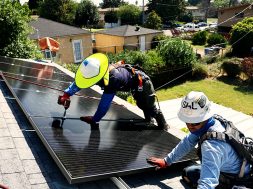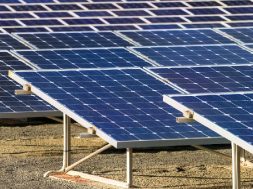
Solar rooftop drive: People’s movement essential to enhance installations in India
The government has set an ambitious target to develop 175 gigawatt (GW) renewable energy by 2022, comprising 100GW solar, 60GW wind, 10GW biomass and 5GW small hydro projects. Of the total 100GW solar installation, 40GW would be rooftop and the balance 60GW would be ground-mounted utility scale. The Draft National Electricity Plan released recently by the Central Electricity Authority of India (CEA) has envisaged additional 1,00,000 MW renewable energy during 2022-27. Considering similar percentage of rooftop addition during 2022-27, it is expected that rooftop solar would be further added to about 24,000MW. Thus, the total rooftop installation until 2027 would be 64,000MW. This has become more crucial now, upon the ratification of the Paris Agreement.
The total solar installation in India currently is to the tune of 9,000 MW. Of this 9,000MW, rooftop installation is about 1,020MW, comprising 377MW industrial, 263MW commercial, 121MW government and 260MW residential. Most of the installation—853MW (85%)—was developed under the capex model, and the balance 15%, i.e, 167MW, was developed under the opex model. The target set by the government is about 1,500MW in FY17. The balance 38,500MW rooftop needs to be installed in the next 5-6 years, i.e, about 6,500MW per year.
International experience
Globally, rooftop installation has picked up or is picking up, as there is pressure on the availability of land. In fact, 40-50% of the total installation in many countries is rooftop .
The lessons learnt are that soft loans, tax credits, the role of municipalities and market-based economy have yielded better results than the earlier policy of feed-in-tariff and direct capital subsidy.
Rooftop potential
It is estimated to be about 1,24,000MW. The urban settlement is about 77,370 sq km, with 38% residential, 4% commercial, 3% industrial and the balance 55% others. Taking into account the global experience, even if 30% of the total solar installation on residential/small commercial rooftop is considered, we need about 40 lakh residential/small commercial installations with an average 3kW solar installation per roof. Thus, one could well imagine the effort required to involve 4 million roofs, though it is merely 1.3% of the total 300 million houses existing in the country.
Recently, the government identified about 7,000MW rooftop installation on government and institutional buildings. About 500MW was tendered earlier and awarded. Another large tender of 1,000MW comprising 700MW opex model and 300MW capex model has been invited by the Solar Energy Corporation of India (SECI), with subsidy varying from 35% to 90%. To meet the gigantic task, residential/small commercial less than 10kW need to be involved on a large scale. However, various issues need to be addressed.
* Degradation of rooftop solar modules is higher than ground-mounted ones, as the cooling effect is better in the latter type. An initial study pointed out that rooftop installation degradation is as high as 2.5% per year, as against 0.6-0.8% on ground-mounted installation. A detailed survey needs to be carried out to further study the degradation pattern.
* To increase the rooftop penetration in the residential, commercial and industrial sectors, awareness must be brought to all the stakeholders, i.e. a ‘people’s movement’ through strong campaigning.
* There are lot of teething troubles in implementation, as it is an emerging area that needs to be streamlined, including net metering approvals, delays in approvals from discoms, large variation of solar penetration percentage in a feeder amongst various discoms, scientific determination through modelling/appropriate software in determination of percentage penetration of solar installations, etc. Then there is lack of clarity on responsibility of bearing the cost augmentation of distribution system due to solar rooftop installation. There is also a need for standardisation of installation methodology to minimise installation time and better cooling/lesser degradation and to reduce the cost. Other issues are liberalisation or waiving of inspections of small-size solar installations at consumer premises, waiving building height approvals from municipalities or authorities, capacity building of discom staff to handle emerging areas, and availability of pan-India skilled manpower in solar installation and O&M.
*Suitable quality control of solar module availability in the Indian market for easier access of good quality products by small customers.
*Easy access of finance for small solar installations is a critical success factor to enhance the penetration of rooftop. In addition to Capex models, third-party models such as Opex and lease model financial products must be introduced, like a home or a car loan, in a big way for smaller installations.
*A sustainable distribution tariff design must be developed by state regulators for discoms and solar generation installer, so that discoms work as a facilitator for higher penetration and not as a reluctant partner. For success, discoms should not land up in a utility spiral of losses as solar penetration increases. This is only possible if distribution tariff is made in two parts: as infrastructural charges and as energy charges, as solar energy is only replacing the other form of energy, not the infrastructure. To expedite rooftop solar addition and to have sustainable growth, the policy, regulatory, technical, social and financial issues need to be addressed at the earliest.
















